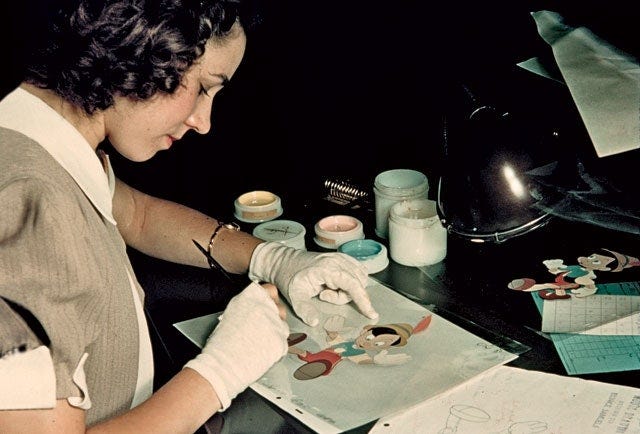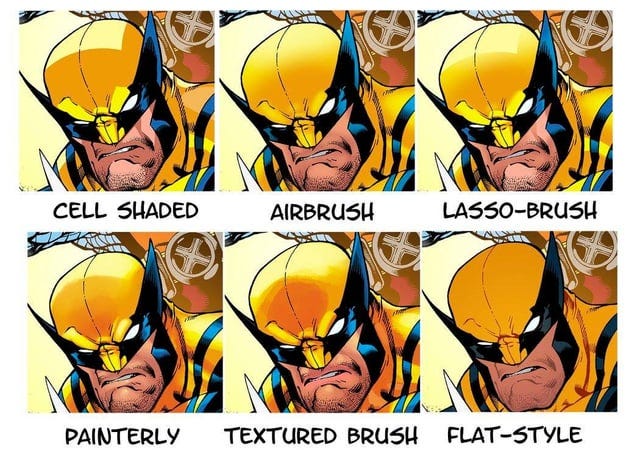The Writer's Take #5: Beauty is in the eye of the beholder.
How to choose an artist for your story!
Short, Sweet, and Snackable!
Some could say my meandering style of writing is an art form, (others might just find it extremely annoying, I see you number six) but, no matter how “artistic” you might find the journey you go on each time you dive into this void of consciousness that is the writers take substack, none of it is the art of your book. And today we are going to talk about how to find, review, contact and choose your art style and artist.
Creating a world and writing a script is hard enough, but when you are pioneering a graphic story, that is only half the battle, the other half, finding the artist to express your world on the page. There are two ways to go about this, the first, hire a seasoned comics editor, who can help in the process, this will allow them to do all the heavy lifting, and that’s that, all done.
Oh wait, you wanted to know how YOU could do it yourself, ok fine, I’ll continue, but I told you last time, I’m getting lazier and lazier with each one of these, but I digress.
First Thing’s First
The first thing to do is to just look at a LOT of art, and I mean A LOT, and spend 20-40 hours just scrolling through art and styles, getting an internal monologue going of what you like, but more importantly what you do not like. This is mission-critical as there are endless styles and artists to choose from. Next, and fortunately for you, you live in 2023, so you have tools at your disposal.
Instagram, Art Station, Deviant Art, and Twitter are fantastic resources to search and find artists. Especially Art Station and Instagram where you can really dive into artists and their styles, both platforms have the contact information for an artist easily accessible and once you find the artist that you feel fits the style best, away we go!
For first-time graphic novel/ comic book creators I suggest setting aside a budget of 125 per page for TEST pages, put 500 bucks aside and get a few test pages before you dive into an artist full tilt, think of it like dating, before marriage. But make no mistake about it, once you choose an artist and get into a book, you are marrying them to you and the story, so dating is a pretty good thing to do first.
Take it from me, who has done it wrong in the past, the test pages are worth their weight in gold.
For actual pages you should be looking at anywhere between 150 USD and 700 USD per page, the range is wide, depending on talent, the story (if its a sick story, the artist will be more flexible), and ownership in the IP, if you're willing to give a little away, then you can probably get a little bit better of a deal.
Now, just to recap and put a finer point on it, I’d start with Art Station, move to Instagram, journey over to Deviant Art, and then wander over to Twitter, in that order when searching for artists to work with for your next book. As always, hit me up on Twitter or IG for any specific questions about what you're working on.
I think it is important to note that being a seasoned artist doesn’t mean they will do great work for your story. The artist-to-story selection process should be coveted like a witch covets a ouija board, with care and precision. While a seasoned artist might have the experience to eb and flow through a story with you, nearly all artists are discovered from their “big breakout piece.”
As a creator, you can be a thought leader by finding artists with the tools listed and letting a future star flourish with an opportunity you can provide. All that is to say, you need to have good taste in art, and the saying “there is no such thing as a bad idea” well, we will talk about that one later, but I can say here, there IS such a thing as a bad eye for art.
So if you think that might be you, tag in a creative director friend to help with this process. But if you think you got what it takes, buckle up and start exploring!
The 4 Types of Comic Art
So now that you understand art, writing, and the meaning of life we can widdle down the specific art styles you can navigate for titles. For the sake of this exercise let’s talk about them in 4 categories, traditional comic art, Manga, Abstract & Obscure, and French style, these are the core four buckets of art out there.
Now, before all the haters swarm in like vultures after a carcass, I said the core buckets, there are countless other styles, but let’s focus on these. From the tone of your writing and the themes of your story, it should be pretty easy to figure out which of these buckets you want to fall into or cross over for.
For instance, currently, Peach Mamoko is dominating covers for Marvel because she brings a Japanese manga style and influence to a traditional comic style. We could also look at the styles of Sandman and see how that art mirrored the story with abstract and obscure art.
The decision for your art style is the most critical decision you will make once you embark on this journey, that is, the most important decision you make before you reach the coloring and lettering phases.
Now I want to address the elephant in the room, yes, I know this post was far less windy roady than the previous ones, but fear not, I just wanted to keep this post poignant and about the artist and not the art of writing.
But when we are back next week, we are going to dive full tilt back into the wacky and weird, and overly over-the-top verbose style we all know I love and you roll your eyes too. But also, next week, I debate (with myself) if the SNL skit about serious MarioKart might actually be a good idea.
I know, you’re gitty now, and you're welcome. Stay curious and keep imagining greater.
Oh yea, and find a goddamn artist already! Why are you still reading this?
Stay Curious, and Keep Writing,
Matthew Medney
Herø Projects, Gungnir, and other musings…
I wanted to take a moment during our intermission here to shamelessly and directly promote my two companies. Gungnir Entertainment, a genre-focused publishing company with best-selling titles from yours truly hitting shelves nationwide this Fall. With books focused on classic sci-fi ideas like “What does it mean to be human” and “is the bible right?” “Adventures throughout the stars” are just a few of the prompts for the books you can dive into with Gungnir. Gungnir’s website will launch this summer, and you can stay up to date on the forthcoming titles on my Instagram, @matthewmedney, or at my author page on Simon & Schuster.
And then there is Herø Projects. The Perennial leader in custom comics and animated services, Herø is a state-of-the-art creative studio that has worked with talents such as Floyd Mayweather, Shaggy, Nghtmre, and brands such as Remi Martin, Live Nation, and Rolling Loud. If Branding through storytelling isn’t your thing you can check out our original titles, the Onyx line with books such as Stable, Remnant, and Best Selling Comic The Red. To learn more about Herø Projects visit us at heroprojects.io
Hope you enjoyed this Inaugural writer’s take, keep a look out as we will have more spread-out writing tips coming up in between the big movie or tv show breakdowns!








